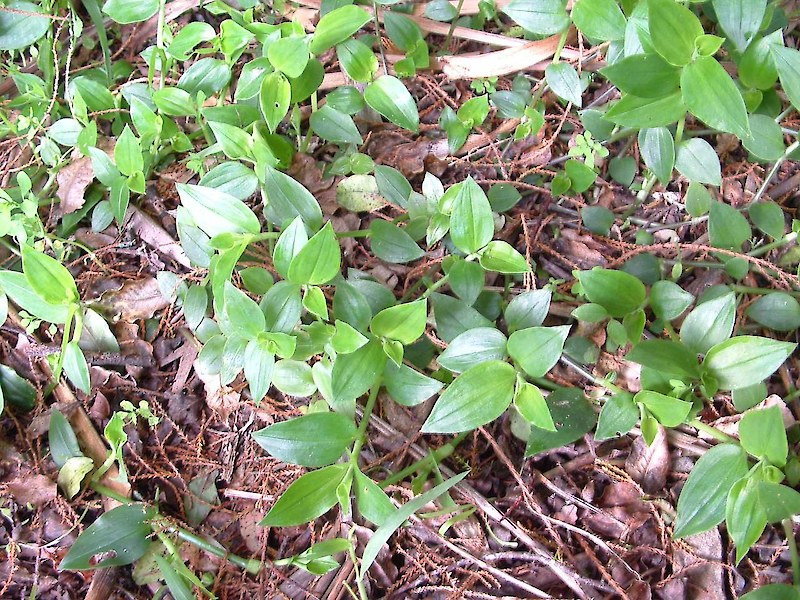Pest plants in the Rangitīkei
There are many pest plants in the Rangitīkei, some more common and problematic than others.
Old Man’s Beard (Clematis vitabla)
If you’re reading this, we’re sure you’re no stranger to OMB. This has been a major focus of our group since our inception and it’s the biggest threat to our native species.
We receive funding to control OMB in high biodiversity sites as well as working with other organisations to control it and keep it out of native bush sites. If you’re a landowner looking to remove OMB from your property please contact our team if you’d like to learn more.
Tradescantia (Tradescantia fluminensis)
Tradescantia is a pest plant that is spread easily, growing from small fragments.
We’ve worked with Horizons Regional Council to release biocontrol agents at Macpherson’s bush in the Turakina Valley to help control it. These included yellow leaf spot fungus and leaf feeding beetles to spread onto uninfected plants, both highly host-specific and highly unlikely to attack anything other than tradescantia.
We’re exploring the use of yellow leaf spot fungus at Sutherlands Puriri Reserve as well before Tradescantia grows out of control there.
Pampas grass (Cortaderia selloana)
We’re sure everyone is familiar with these pest plants as it’s hard not to spot them when travelling around the country.
The seeds are very light and are wind-dispersed up to 50km and are quick to grow wherever there’s unmanaged disturbed ground.
Pampas can be separated from the native Austroderia (Toetoe) by the prominent single midrib on the leaves, the Austroderia species have several prominent veins. Pampas grass also points straight upwards while Toetoe tends to droop.
Karaka
Unlike many pest plants we deal with, Karaka is a NZ native, however not native to our district, and was once a popular Māori food source but has become a problem in NZ native bush sites, outgrowing other native species and reducing local plant diversity.
Although the berries are edible, the kernel is toxic to consume (unless prepared and cooked correctly) and can be fatal to dogs who ingest it.

Agapanthus (Agapanthus praecox)
This pest plant is a robust, evergreen, clump-forming perennial, 60 centimetres tall with up to 20 wide leathery leaves on each shoot. Light blue or white flowers forming umbrella-shaped clusters are spread by wind and water; by the long, thick, underground stem system. They form a dense mat that excludes native species, and seedlings easily outcompete native plants in warm, dry places.
Madeira Vine (Anredera cordifolia)
A relatively unknown weed currently on our radar is Madeira Vine (Anredera cordifolia) also known as Mignonette Vine.
Like Old Man’s Beard, these vines grow up and around our native plants and trees, smothering them and eventually killing them.
Unlike many pest plants, this vine does not seed, however spreads by nodules which grow along the vines.
Blackberry (Rubus fruticosus agg.)
Blackberry forms dense, long-lived clumps that smother most low growing species and inhibit the establishment of native plant seedings.
This is only a small list of the 300* pest plants in our region.
View a list of common garden weeds and welcome native alternatives on the Weedbusters website. We have hard copy versions of their Plant Me Instead booklets available, contact our team to request one to be delivered to you.
If you identify these pest plants on your property and would like assistance with controlling them, please reach out to our team at info@rangitikeienvironmentgroup.co.nz
*www.horizons.govt.nz/managing-natural-resources/plant-animal-pests/pest-plant-control